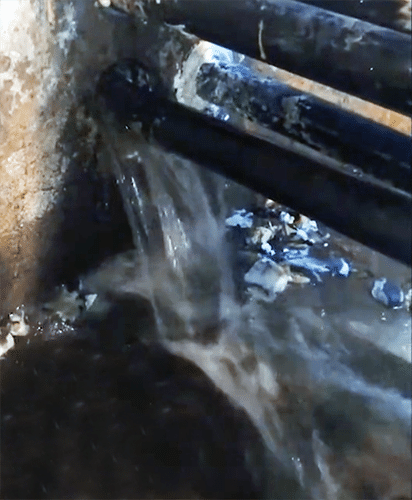How Do You Fix a Leaking Duct?
When ducts or conduits are not sealed, critical equipment is vulnerable to water, gas or pest intrusion. You need to prioritize finding a sealant that cannot only seal the conduit but can also withstand years of operation. Selecting a low-cost sealant such as one-part foam sprays will likely lead back to water intrusion, putting electrical systems at risk of damage or outright failure. In this article, you’ll learn how to identify vulnerable ducts — and how to seal them effectively.
What is a Duct?
In this article, we define a duct as a conduit, or tube, that houses critical wires or cables for electrical or communication equipment. Duct entrances must be effectively sealed with an expanding closed-cell foam or mechanical seal to protect equipment from intrusions such as water, gas and pests to prevent costly repairs or even full system replacements. Because ducts are sometimes installed in extreme environments underground or underwater, selecting hardy materials to seal them is of the utmost importance. Selecting a cheaper material as a sealant can lead to leaks that can cause costly damage.
| Related Content: Is Meeting a Standard Enough?—An Examination of Duct Sealing Code Compliance. |
How to Seal a Duct
 Once an unsealed conduit entrance has been detected and located, it should be quickly sealed to protect critical electrical and communication cables and equipment. Failure to do so can result in expensive damage and service interruptions. Inadequate seals may also violate regulatory codes such as the NEC (National Electrical Code).
Once an unsealed conduit entrance has been detected and located, it should be quickly sealed to protect critical electrical and communication cables and equipment. Failure to do so can result in expensive damage and service interruptions. Inadequate seals may also violate regulatory codes such as the NEC (National Electrical Code).
To seal a conduit entrance, follow these steps:
Stop the Source:
Identify the source of the water. Common sources include rainfall, storm surges, snowmelt, tsunamis, and condensation buildup. Hydrostatic pressure over time can break down weak duct barriers, leaving equipment exposed to water damage.
Select the Duct Sealant:
An expanding closed-cell foam formulated specifically for watertight conduit seals is the best solution for sealing a leaking duct. The sealant flows around the cabling, filling the conduit. As the foam rises, it cures to create robust seals that hold up to 90 feet (27 m) of water head. Such engineered foam is code compliant, versatile, durable, easy to apply, and re-enterable. Mechanical seals are also a viable solution. Avoid duct putty and one-part canned foams, as they are not watertight and will ultimately lead to more duct leaks over time.
| Related Content: Duct Seals Prevent Ruinous Water Damage. |
Install the Seal:
Once you’ve selected a duct sealant, always follow the manufacturer’s installation and safety instructions, as they can vary by product. Sealing a dry duct is preferred as it is easier and more effective, but products and techniques exist for sealing active leaks.
Harden the System:
Check the status of all other conduit entrances and install new seals as needed. Preventive measures are always easier and more economical than fixing failures.
| Related Content: Sealing Conduits for Resilient Electrical and Telecommunication Systems |
Seal the Deal with Polywater Duct Sealant Solutions
Polywater® duct sealants are widely used and well respected in the electrical and communications industries. They effectively seal and protect critical infrastructure from damage and outages. We take pride in offering specialty chemical solutions that industry professionals trust. If you need a robust duct seal, consider Polywater’s selection of sealant products.
